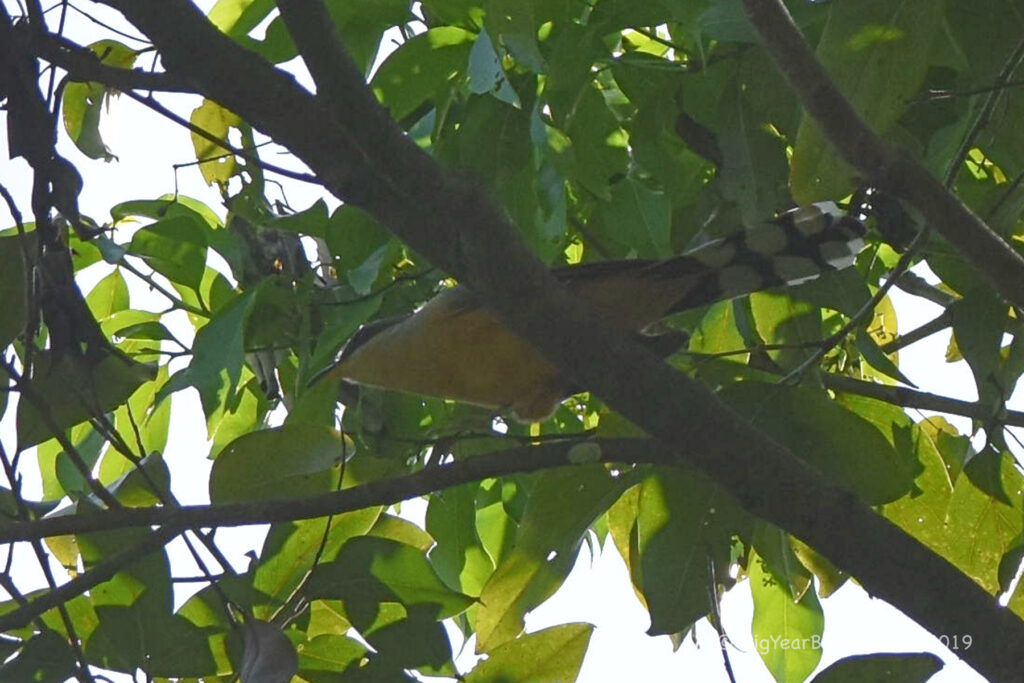The Mangrove Cuckoo (Coccyzus minor) is a medium-sized bird that measures about 12 inches (30 cm) in length and weighs around 2.3 oz (65 g). They have a distinctive long tail and curved bill, which is slightly decurved. Their plumage is mostly brown with a grayish head and neck, and a rufous patch on their wings. They have a white stripe above their eyes, which is a distinguishing field mark.
Mangrove Cuckoos are primarily found in mangrove swamps, coastal hammocks, and other wooded areas along the coasts of Mexico, Central America, the Caribbean, and parts of South America. They are known to migrate to the southern United States during the breeding season, particularly in Florida, where they can be seen from April to September. In the winter months, they migrate south to their non-breeding range in the Caribbean and South America.
One of the best ways to spot a Mangrove Cuckoo is by listening for their unique call, which is a deep, low-pitched “croo-croo-croo.” They are typically shy and difficult to spot due to their preference for dense vegetation, but they can sometimes be seen foraging for insects and small animals in the open. They are known to be quite vocal during the breeding season, often engaging in duets with their mates.
Mangrove Cuckoos are primarily insectivorous, feeding on a variety of insects such as caterpillars, grasshoppers, and beetles. They also eat small reptiles, amphibians, and occasionally fruits and seeds. They are known to have a unique feeding behavior where they will use their curved bill to extract insects from tree bark, leaves, and other crevices.
Although the Mangrove Cuckoo is not currently considered threatened or endangered, they are vulnerable to habitat loss due to the destruction of mangrove swamps and coastal forests. Conservation efforts are underway to protect these important habitats and ensure the survival of this unique and important bird species.

